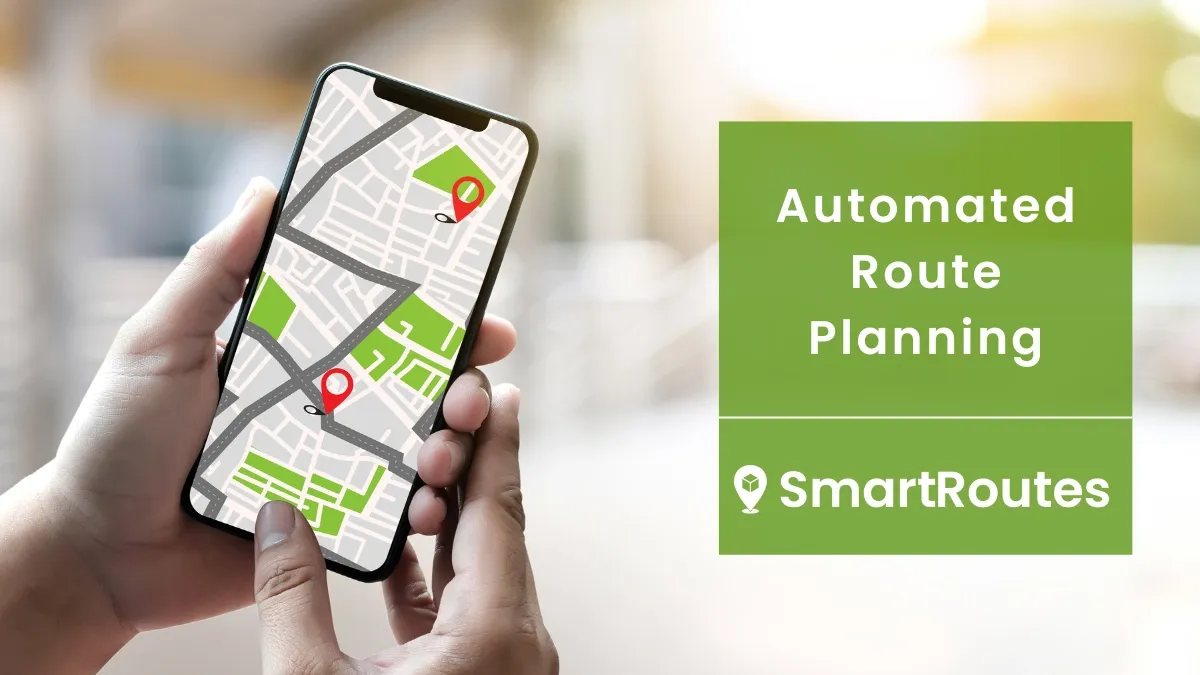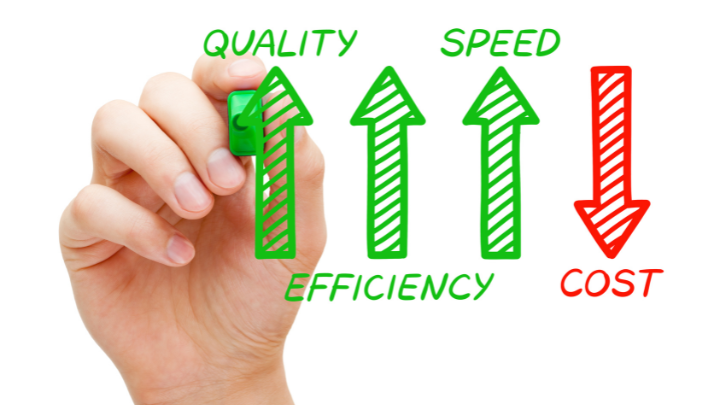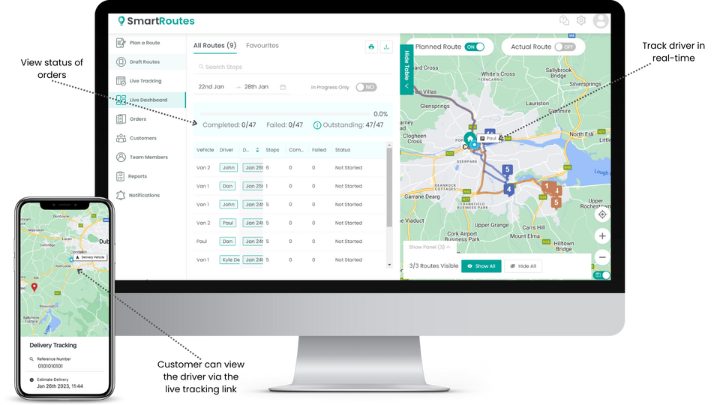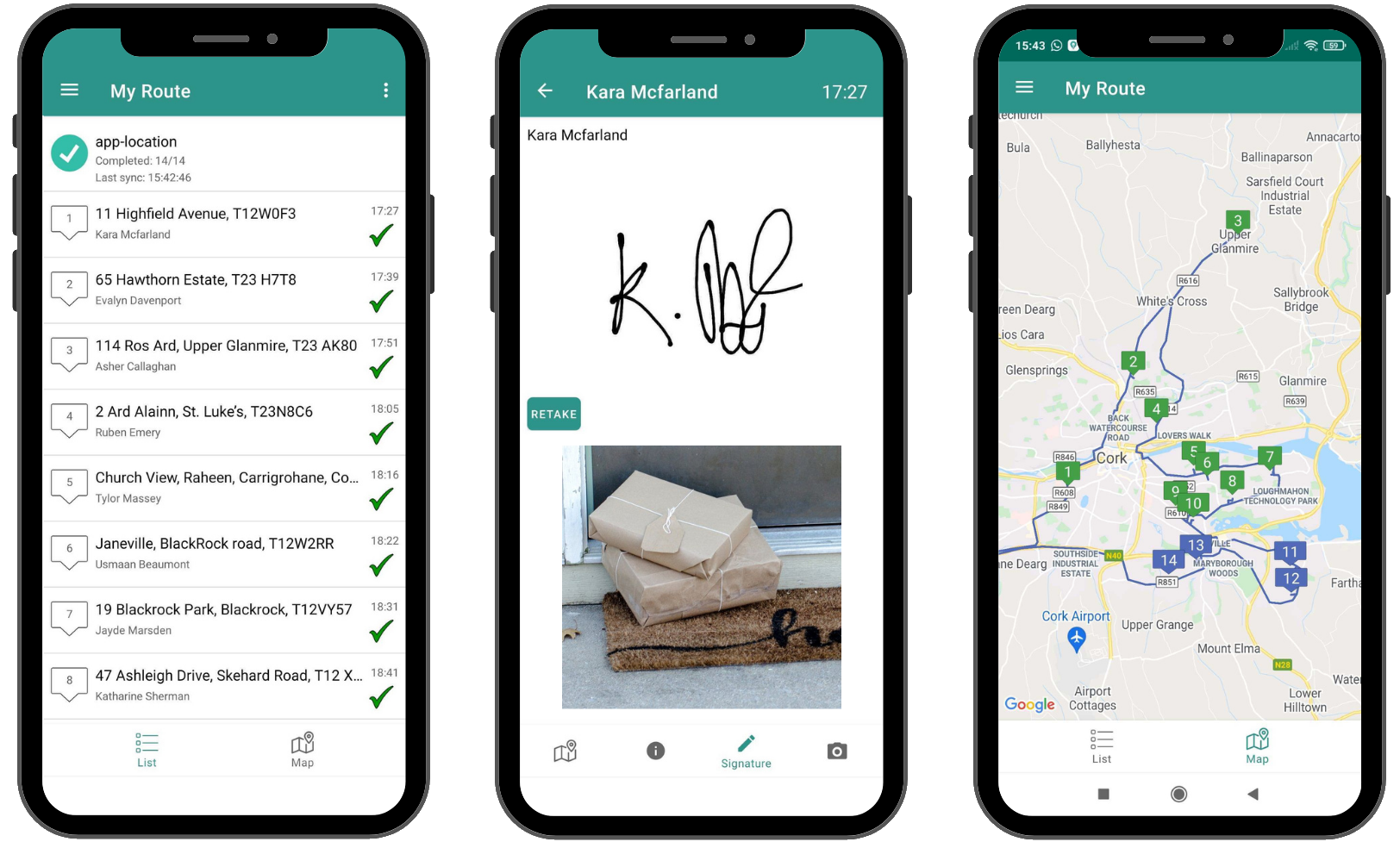Automated Route Planning: The Key to Efficient Deliveries
In this blog post, we'll delve into the world of automated route planning, exploring its benefits and highlighting the differences compared to manual route planning.

Efficiency is key when it comes to the last mile. As technology continues to advance, the logistics industry has embraced automation as a solution to streamline operations and optimize processes. One particularly impactful innovation that has reshaped the logistics landscape is Automated Route Planning.
In this blog post, we'll delve into the world of automated route planning, exploring its benefits and highlighting the differences compared to manual route planning.
What is Automated Route Planning?
8 Benefits of Automated Route Planning
The Difference between Automated Route Planning and Manual Route Planning
What is Automated Route Planning?
Automated route planning, in its essence, is the utilization of software algorithms to calculate the most efficient routes for vehicles to take between multiple points. These points can represent delivery destinations, service locations, or any other stops that require navigation. Instead of relying on manual input and guesswork, automated route planning software factors in various variables such as delivery locations, vehicle capacities, traffic conditions, and time constraints to generate the most efficient routes possible.
SmartRoutes Route Planning Software
Streamline your entire delivery process, all from one platform

8 Benefits of Automated Route Planning
1. Improved Accuracy
Manual route planning is inherently susceptible to human error, which often results in suboptimal routes and missed delivery deadlines. This can be attributed to various factors such as oversight, fatigue, or limited access to real-time data.

In contrast, automated route planning revolutionizes this process by leveraging advanced algorithms and up-to-the-minute data, thus ensuring the most efficient routes are chosen at all times. Furthermore, it minimizes the need for backtracking, optimizing driver efficiency and reducing unnecessary miles. By eliminating human error and leveraging software for route planning, automation not only enhances accuracy but also ensures timely deliveries, ultimately boosting productivity and customer satisfaction.
2. Increased Productivity
Optimized routes achieved through automated planning not only enhance accuracy but also significantly boost productivity. By minimizing travel time and reducing unnecessary stops, drivers can devote more time to fulfilling orders or servicing customers, thereby maximizing throughput.
The ability to track vehicles in real time allows for proactive adjustments to routes, ensuring that any unexpected delays or disruptions are promptly addressed, further enhancing productivity.
Improved productivity leads to better resource utilization and cost savings for businesses. With fewer idle hours and optimized routes, companies can serve more customers with the same resources, ultimately increasing revenue potential.
3. Accurate ETAs
Automated route planning improves the delivery process by providing precise estimated time of arrivals (ETAs) for each stop along the route. These systems can calculate ETAs with a high level of accuracy as they accurately account for the distance between stops, the time spent at stops AND they are updated in real time as deliveries are completed. This level of precision allows customers to plan their schedules more effectively, knowing exactly when to expect their deliveries.
Moreover, accurate ETAs enable businesses to manage expectations more effectively. By providing customers with realistic arrival times, businesses can build trust and confidence in their delivery services. Customers appreciate transparency and reliability, and accurate ETAs contribute to a positive delivery experience.
4. Reduced Cost per Delivery
By implementing software for route planning to minimize distance traveled and eliminate unnecessary detours, these automated systems drastically reduce fuel consumption. Every mile saved translates into tangible savings on fuel costs, especially as fuel prices fluctuate unpredictably.

By efficiently scheduling pickups and drop-offs along the route, route planning systems ensure that vehicles are fully utilized, thereby reducing or even eliminating empty miles. This not only saves on fuel but also maximizes the productivity of each driver and vehicle in the fleet.
The increased drop rate per driver, facilitated by optimized routes and scheduling, leads to a proportional reduction in fuel costs and other associated expenses per delivery. With fewer idle hours and more deliveries accomplished within a given timeframe, the overall operational efficiency of the fleet is significantly enhanced.
5. Improved Customer Satisfaction
Automated route planning doesn't just optimize logistical efficiency; it's a powerful tool for enhancing customer satisfaction and retention. By ensuring that deliveries arrive promptly and within predefined delivery windows set by the customer, automated systems set a high standard for reliability and professionalism.
Customers appreciate the convenience and predictability of receiving accurate ETAs, allowing them to plan their day accordingly and avoid waiting unnecessarily. Whether it's a package arriving at a residential address or goods being delivered to a business, knowing precisely when to expect a delivery minimizes disruptions and enhances overall satisfaction.
Automated route planning systems facilitate proactive communication with customers throughout the delivery process. Through automated emails or SMS notifications, customers receive updates at key stages—from order confirmation to dispatch, delivery en route, and completion. These communications provide transparency and reassurance, keeping customers informed and engaged every step of the way.
6. Increased Driver Capacity
Automated route planners enable businesses to maximize the capacity of their drivers, ultimately allowing them to serve more customers with the same resources. By carefully planning routes to minimize travel time, eliminate unnecessary stops, and prioritize deliveries based on location and urgency, companies can ensure that drivers spend more time on the road actively fulfilling orders rather than being stuck in traffic or navigating inefficient routes.
Rather than hiring additional drivers or investing in more vehicles to meet growing demand, businesses can leverage optimized routes to extract maximum value from their current workforce and fleet. This not only reduces overhead costs but also enhances operational flexibility and scalability.
7. Fleet Management
One of the key features of route planning systems is real-time vehicle tracking. Fleet tracking allows businesses to monitor the exact location and status of each vehicle in their fleet at any given time. This enables dispatchers to have full visibility into fleet operations, allowing them to track deliveries, optimize routes, and respond promptly to any deviations or delays.

8. Optimizing Vehicle Capacity
Automated route planning systems optimize vehicle capacity to maximize space utilization and operational efficiency. By analyzing the characteristics of each vehicle and the requirements of each delivery, automated routing systems can intelligently allocate items to ensure that vehicles are loaded efficiently. This minimizes wasted space and reduces the need for multiple trips.
Route planners can optimize the packing of vehicles based on how items will be unloaded at each stop. By strategically arranging items within the vehicle to match the delivery sequence, these systems minimize the time and effort required for loading and unloading, increasing overall productivity and reducing delivery times.
The Difference between Automated Route Planning and Manual Route Planning
Manual route planning relies on human intuition and experience. While this traditional method has served its purpose, it's quite limited. Think about it - humans can only process so much data at once, and in real-time, it's even more challenging. Human planners have to juggle multiple factors like traffic conditions, delivery restrictions, and customer preferences. As a result, the routes they come up with might not always be the most efficient, leading to wasted time and resources.
On the other hand, automated route planning is a game-changer. It takes advantage of powerful algorithms and technology to analyze several variables simultaneously. By tapping into real-time data feeds, automated systems can generate optimized routes that minimize travel time, save fuel, and boost overall efficiency. Plus, they can be updated on the fly to account for changing conditions.
Automated Route Planning with SmartRoutes
Our advanced algorithms take into account factors such as delivery windows, vehicle capacities, and customer preferences to generate optimized routes that minimize costs and maximize efficiency. With features such as real-time tracking, route optimization, and comprehensive analytics, SmartRoutes empowers businesses to streamline their logistics operations and stay ahead in today's competitive marketplace.
We even go one step further to make the process fully automated - through integration with your ERP, EPOS or other third party software (see integrations), orders as soon as they are placed are added to a route, thus eliminating the need for manual upload of stop information. Try the platform for free over the next 7 days to see how route planning software can benefit your business.
Frequently asked questions
1. What is automated route planning?
Automated route planning refers to the use of software algorithms to calculate the most efficient routes for vehicles to travel between multiple points, such as delivery destinations or service locations. These algorithms take into account various factors, including vehicle capacity, time constraints, traffic conditions, and delivery priorities, to optimize routes for minimal travel time and distance. By automating the route planning process, businesses can streamline logistics operations, improve productivity, and enhance customer satisfaction.
2. Can automated route planning accommodate unique delivery requirements, such as time windows or special handling instructions?
Yes, automated route planning systems are designed to accommodate a wide range of delivery requirements, including time windows and special handling instructions. Businesses can input specific constraints and preferences into the system, such as delivery time frames, customer preferences, and any special handling instructions for delicate or hazardous goods.
3. What industries can benefit from automated route planning systems?
A variety of industries can benefit from the implementation of automated route planning systems. Some of the industries that commonly utilize these systems include:
- Logistics and Transportation: Companies involved in the transportation of goods, such as couriers, trucking companies, and delivery services, can benefit from automated route planning to optimize their delivery routes, reduce fuel costs, and improve operational efficiency.
- Retail and E-commerce: Retailers and e-commerce businesses can use automated route planning to optimize delivery routes for fulfilling customer orders, ensuring timely deliveries and reducing shipping costs.
- Field Service Management: Industries such as telecommunications, utilities, and home services can benefit from automated route planning to optimize routes for field service technicians, improving response times and customer satisfaction.
- Waste Management and Recycling: Waste management companies can use software to optimize collection routes for garbage trucks, minimizing fuel consumption and reducing environmental impact.
If you enjoyed this blog, you might also be interested in:








